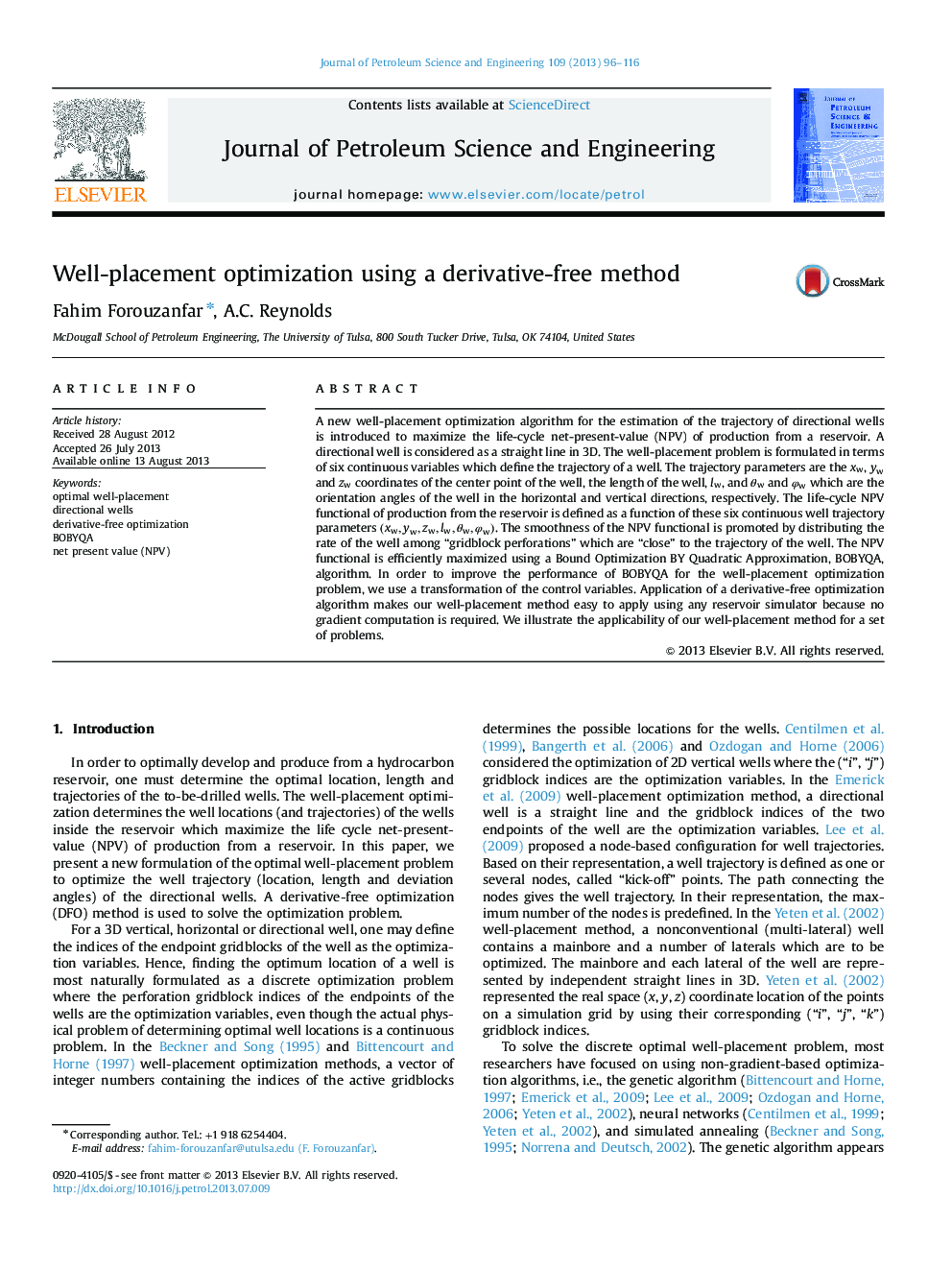| کد مقاله | کد نشریه | سال انتشار | مقاله انگلیسی | نسخه تمام متن |
|---|---|---|---|---|
| 1755260 | 1522832 | 2013 | 21 صفحه PDF | دانلود رایگان |

• NPV is defined as a relatively smooth function of the continuous well parameters.
• The algorithm is computationally feasible and does not require an adjoint gradient.
• The algorithm can be applied to both rate-controlled or pressure-controlled wells.
• The proposed well-placement method may converge to local optimal solutions.
• The algorithm is applied for 3D synthetic reservoirs and PUNQ reservoir model.
A new well-placement optimization algorithm for the estimation of the trajectory of directional wells is introduced to maximize the life-cycle net-present-value (NPV) of production from a reservoir. A directional well is considered as a straight line in 3D. The well-placement problem is formulated in terms of six continuous variables which define the trajectory of a well. The trajectory parameters are the xwxw, ywyw and zwzw coordinates of the center point of the well, the length of the well, lwlw, and θwθw and φwφw which are the orientation angles of the well in the horizontal and vertical directions, respectively. The life-cycle NPV functional of production from the reservoir is defined as a function of these six continuous well trajectory parameters (xw,yw,zw,lw,θw,φw)(xw,yw,zw,lw,θw,φw). The smoothness of the NPV functional is promoted by distributing the rate of the well among “gridblock perforations” which are “close” to the trajectory of the well. The NPV functional is efficiently maximized using a Bound Optimization BY Quadratic Approximation, BOBYQA, algorithm. In order to improve the performance of BOBYQA for the well-placement optimization problem, we use a transformation of the control variables. Application of a derivative-free optimization algorithm makes our well-placement method easy to apply using any reservoir simulator because no gradient computation is required. We illustrate the applicability of our well-placement method for a set of problems.
Journal: Journal of Petroleum Science and Engineering - Volume 109, September 2013, Pages 96–116